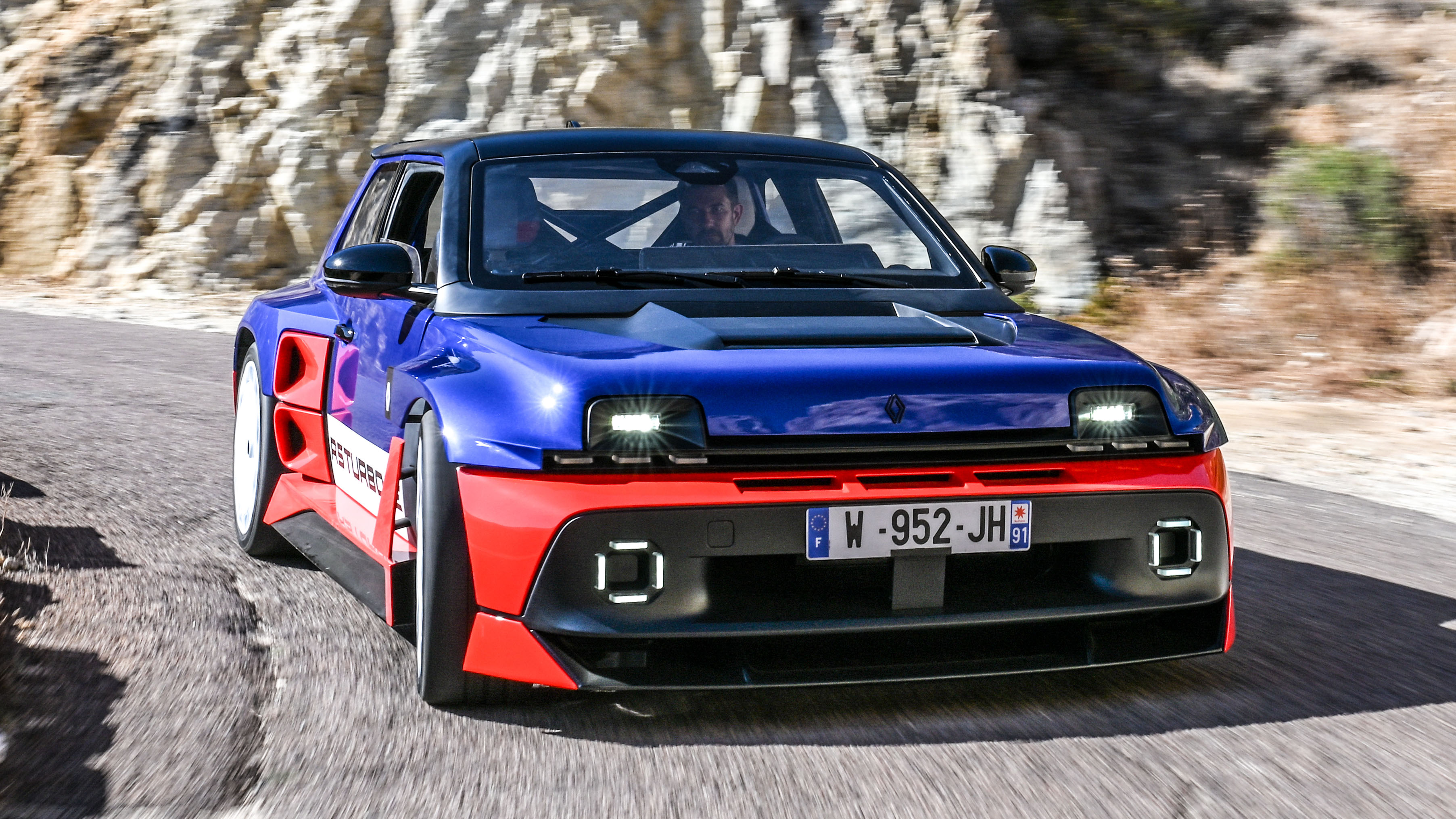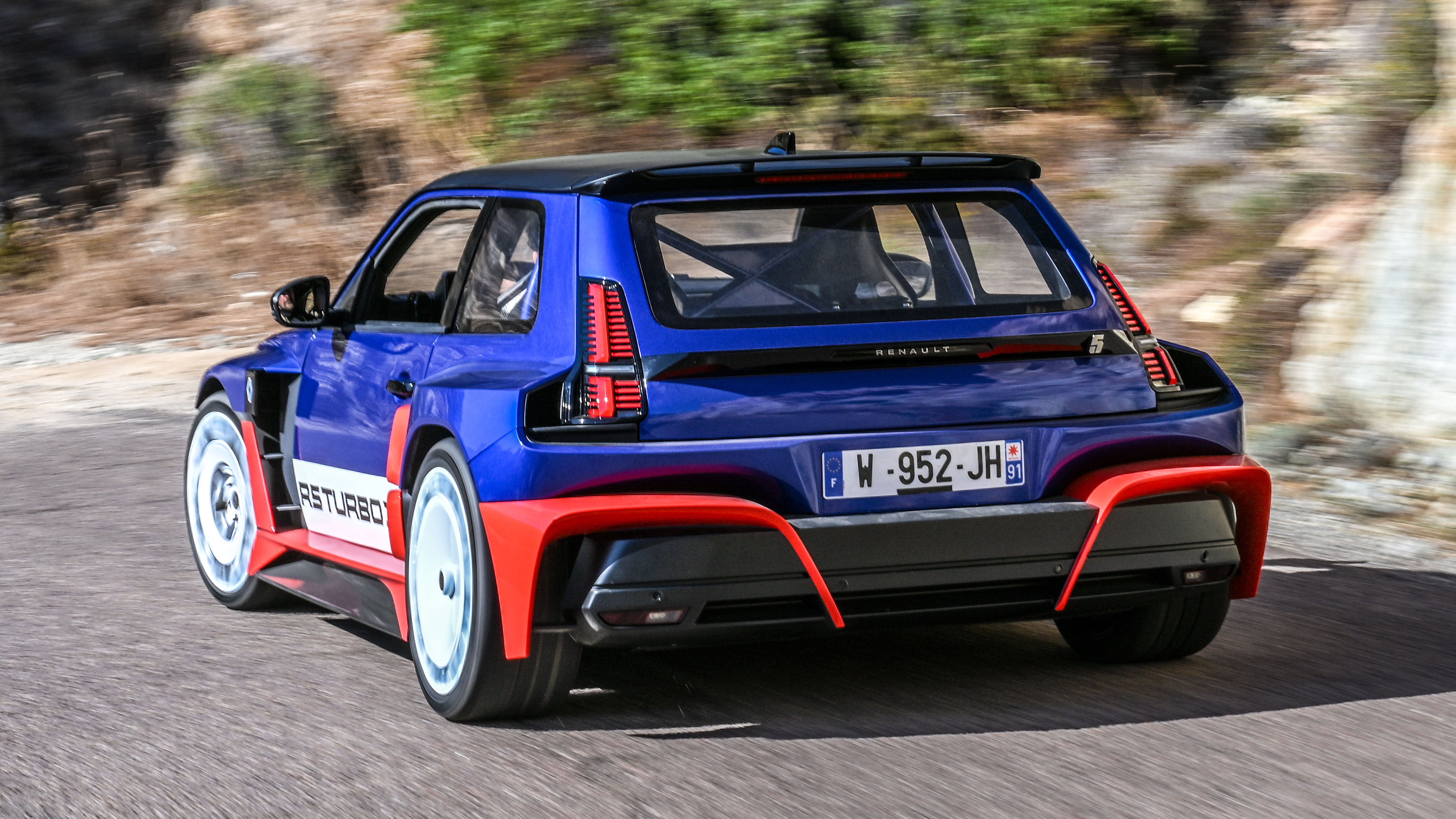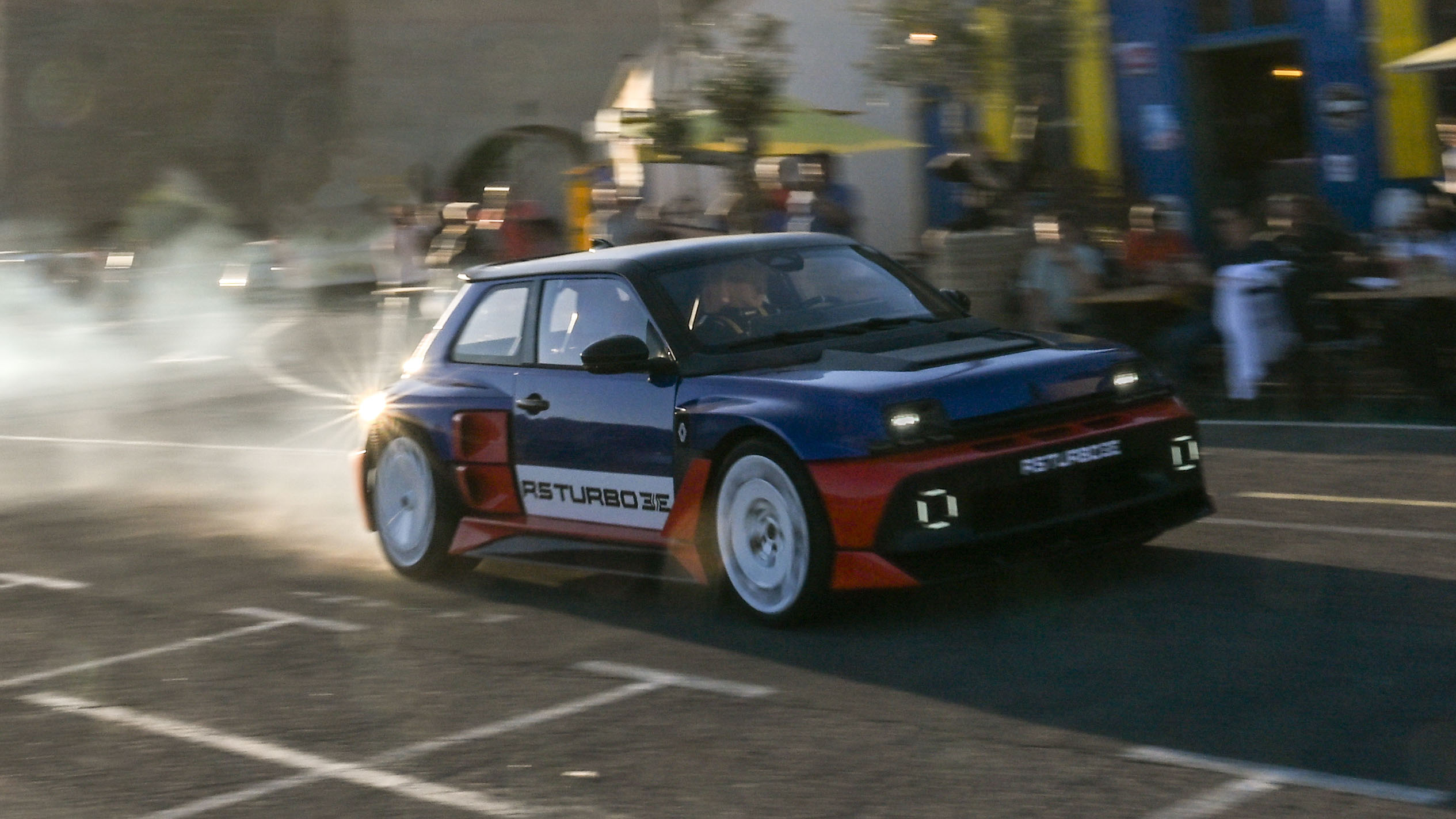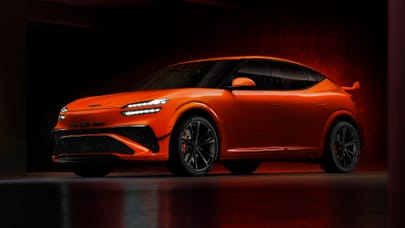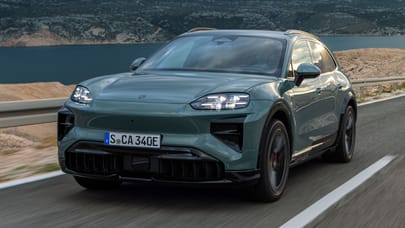
Renault 5 Turbo 3E: flat out in the mad, bad, 540bhp 'superhero' R5
Top Gear gets a ride in the R5 3E. Top Gear regrets eating a big lunch
What is it?
The 5 Turbo 3E is Renault’s homage to the heyday of the original Renault 5 Turbo - the ‘80s homologation car for Group B rallying. The one that looked like it was wearing someone else’s wheelarches and always smelled strongly of petrol because the 1.8-litre turbo four-cylinder sat in the cabin just behind your hips rather than under the bonnet.
There are notable differences here though; 540bhp rather than 180 (albeit in a car that weighed less than the airbags it didn’t have), and electric motivation, just like the new 5.
So it’s a rear-wheel drive Renault 5?
In the same way that a housecat is a leopard. The Turbo 3E has a chassis made by sister company Alpine, full carbon bodywork and hub/in-wheel electric motors. The wheelbase is longer, the windscreen has migrated backwards and it’s wider by a multitude of inches. It’s actually as wide as a Lamborghini Aventador - we know because we measured it. And because of the truncated length and exaggerated width, it would currently be the squarest car on sale if it were in production right now. Which is a weird but cool stat.
Cooler than that are the hub motors - not a new technology, but one that’s not common on production cars. Basically, the electric motors sit entirely within the 20in wheels at the rear. So you get direct drive and finely digital control of the driven wheels. That means you can minutely manage the behaviour of the rear axle (there are only a pair of motors for the 3E), and deliver all sorts of dynamic goodness with a twitch of the coding.
Yes, some people will mutter about the addition of unsprung weight - adding mass to the bits boinging around on the end of the axle, which is usually bad - but you can dial out the excess with clever data. You also get quite a lot of power - 540bhp - and huge torque, which makes this stubby little monster fairly lively.
So you’ve driven it?
Not yet. Though we did get a passenger ride in a prototype with rally driver Julien Sournier on one of the Corsican rally stages that made its forebear famous in the hands of Jean Ragnotti back in the day. The bumpy, tight, cliff-edge Corsican rally stages that make you suck in a breath to try and make the car smaller. The ones that make you aware of the 300ft air gap between you and the valley floor. And aren’t those retaining walls smaller and more flimsy than they were a minute ago?
Stop moaning - what’s it like?
Not finished. But you do get an idea of what this thing might be like, and the results are more than encouraging. It’s a fast car from the off - the 0-62mph time is entirely believable - but punchy acceleration from an EV really isn’t that shocking anymore. What’s good is the way the car moves, the way the short wheelbase tucks itself neatly into corners, the way it slides about and becomes a bit manic. It’s not like an electric supercar as such, because it’s more characterful than that. You’re aware of the lack of length, the fact that the car feels immensely four-square and that it has lots of grip.
The prototype needs a bit of work on the damping; it bounced slightly over the bigger lumps of the test stage and lunged a bit on the supremely effective brakes, and the two motors weren’t synced absolutely, so there was quite a bit of wheelspin instead of the lockstep of an electronic limited-slip differential, but the bones are definitely there. There are also many months between this car and customer examples, so there’s time to finesse everything.
The best bit is that this car, from a dynamic point of view, feels largely unique - there’s something about the way it sits on the road when going fast, the views, even the acoustics. It doesn’t make any particular faked noise, but the way the sound bounces around the cabin is pure hatchback rather than the more subdued aural cues of most EV fast things. It’s exuberant and a bit silly and a proper laugh. What a small (ish) fast Renault should be. Even the full-on rally 5s would be in awe of this thing’s ability to punch out of corners though.
What’s it like inside?
Up to this point, we’d only seen renders of the inside of the 3E, so it was brilliant to see that the reality lives up to the hype. Two carbon bucket seats up front, backed by a colour-coded half cage in the rear with a surprisingly generous boot. One of the advantages of the motors being tucked into the hub area. The steering wheel is nicked from an Alpine (nothing wrong with that) and features a couple more switches and dials, with a pair of 10in screens up front with some unfamiliar graphics and settings.
Top Gear
Newsletter
Thank you for subscribing to our newsletter. Look out for your regular round-up of news, reviews and offers in your inbox.
Get all the latest news, reviews and exclusives, direct to your inbox.
We did notice one setting for ‘Drift Assist’, which is promising, but probably of more assistance to off-the-cuff drifting is the upright stake of a hydraulic handbrake just by your right wrist. A quick yank on that and the car simply locks the back wheels and does an elegant volte-face 180. If you’re going more quickly, it’s the drift-initiation final boss. Sournier got quite good at the hard-park stop on the test route, entirely appropriate for a rally driver in what feels very much like an electric rally car.
There are some familiar bits - quite a few Renault nods and the gear selector is the same as in every Renault and most modern Dacias, but with all the colour-coded plastics and metal, it feels special - and that’s good. It’s also worth noting that Renault is more than aware of the need to stand out; you can have the car completely customised straight from the factory, from interior materials to livery.
And if you go all-out, you can swell the list price from £135k to nearer £200k, which is not beans. Mind you, Renault is only planning 1,980 cars in the first phase, as a nod to the early car’s age. And… um… did anyone else notice that the front wheels are 20-inches too? Which means you could stick in another pair of in-wheel motors to give four-wheel drive and 1,100bhp? No? Only us, then.
So what is it then? Supercar or superhatch?
It’s more a super hatch than a supercar, but no lesser for that. It’s something a bit new - more aggressive and compromised than a Hyundai Ioniq 5 N, less languid in its reactions than a fast saloon EV. And it’ll do all the normal stuff perfectly well, with an 800-volt architecture, it’ll charge 10-80 per cent on a big enough charger in just 15 minutes. With a 70kWh battery, that’s a 250-mile-ish range, and it’d be practical enough for two people on a fairly long journey. Although if you put the dog in the back, be prepared for a vet bill as that ‘cage won’t do Fido any favours in the braking phase.
So what’s the passenger side verdict?
Fabulous. There’s obviously still work to do here, but the sensations, attitudes and vibe are all on point. Despite being absolutely nothing to do with a modern Renault 5 EV or indeed the historic R5 Turbo, the 3E manages to pay attention to the attitudes and disposition of both. It’s a superhero Renault 5, the cartoony, Manga-esque celebrity in the range.
It’s very expensive for a Renault 5, but incredibly cheap for something so unique. Now all we’ve got to do is get Renault to let us drive it.
Price: £135,000 (+ optioning)
Battery/ range: 70kWh, 248 miles
Charging: 800V/350kW (10-80 per cent in circa 15mins)
Power: 540bhp, n/a lb ft of torque
Performance: less than 3.5 seconds 0-62mph, 167mph top speed
Transmission: rear-wheel drive, in-wheel/hub motors x2
Weight: 1,450kg




